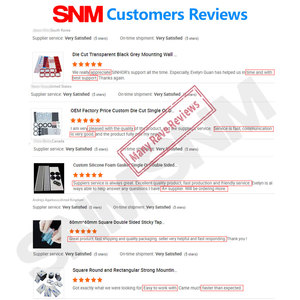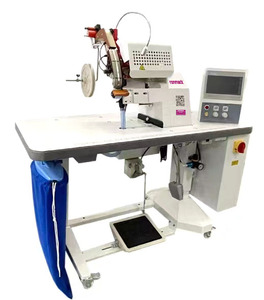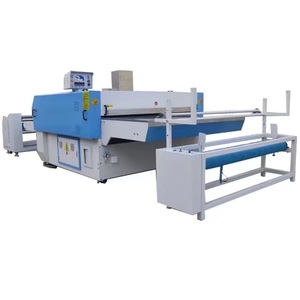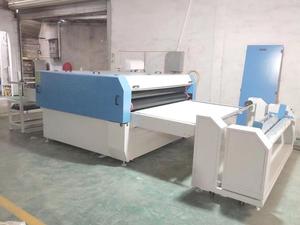
All categories
Featured selections
Trade Assurance
Buyer Central
Help Center
Get the app
Become a supplier

(902 products available)















































fusing tape bonding underwear machine are an essential component in the apparel manufacturing industry, serving various functions that streamline production processes and enhance efficiency. These machines and their parts are designed to cater to specific needs within the textile sector, ensuring that garments are produced with precision and consistency. From sewing machines to fabric cutting equipment, fusing tape bonding underwear machine play a crucial role in transforming raw materials into finished products. As technology advances, these machines are continually being upgraded to meet the demands of modern apparel production, offering innovative solutions that help manufacturers stay competitive in a fast-paced market.
The variety of fusing tape bonding underwear machine available is extensive, with each type tailored to perform specific tasks within the apparel industry. Common types include sewing machines, embroidery machines, and fabric cutting machines. Sewing machines are fundamental, available in various configurations such as lockstitch, chainstitch, and overlock, each offering unique benefits for different sewing applications. Embroidery machines add decorative elements to garments, ranging from single-head to multi-head models for increased productivity. Fabric cutting machines, including straight knife and rotary models, ensure precise cutting of materials to optimize fabric use and reduce waste. Each type of fusing tape bonding underwear machine is engineered to meet specific production requirements, enhancing efficiency and output.
fusing tape bonding underwear machine are equipped with a range of features designed to optimize garment production. These machines provide functionalities such as automatic thread cutting, speed control, and programmable stitch patterns, which improve precision and reduce manual intervention. Features like built-in diagnostics and maintenance alerts ensure that machines operate smoothly with minimal downtime. Advanced models offer digital interfaces for easy programming and adjustments, allowing operators to customize settings for specific fabric types and styles. The integration of IoT technology in fusing tape bonding underwear machine enables real-time monitoring and data analysis, providing insights into production efficiency and helping manufacturers make informed decisions.
The construction of fusing tape bonding underwear machine involves the use of durable materials and high-quality components to withstand the demands of continuous operation. Metal alloys, such as stainless steel and aluminum, are commonly used for their strength and resistance to wear. Precision-engineered parts, including gears, needles, and bobbins, are manufactured to exact specifications to ensure reliable performance. Electronic components, such as sensors and microcontrollers, are integrated to enhance functionality and automation capabilities. The choice of materials impacts the machine's durability, efficiency, and maintenance requirements, allowing manufacturers to tailor fusing tape bonding underwear machine to specific production needs. As sustainability becomes a focus, eco-friendly materials are being explored to reduce environmental impact.
To maximize the efficiency and lifespan of fusing tape bonding underwear machine, it is essential to follow best practices for their use and maintenance. Regular cleaning and lubrication of moving parts help prevent wear and extend the machine's operational life. Operators should be trained to use machines correctly, ensuring that settings are adjusted according to the fabric type and production requirements. Implementing a routine maintenance schedule and addressing issues promptly can minimize downtime and enhance productivity. For optimal performance, it is crucial to select the appropriate machine type and model based on the specific tasks and volume of production. Proper storage and handling of fusing tape bonding underwear machine reduce the risk of damage and ensure safe operation. Educating users on the importance of maintenance and correct usage can significantly contribute to efficient and sustainable apparel production.
Choosing the appropriate fusing tape bonding underwear machine for apparel manufacturing involves several critical considerations. Firstly, it's essential to assess the production needs and volume, as different machines are designed to handle various scales of operation. For instance, high-speed sewing machines may be suitable for large-scale production, whereas versatile embroidery machines might be ideal for smaller, customized batches. Understanding the specific requirements and matching them with the capabilities of the fusing tape bonding underwear machine ensures optimal performance and efficiency in garment production.
Another important factor is the compatibility of fusing tape bonding underwear machine with existing equipment and processes. Integration is key, especially when upgrading or expanding production lines. Ensuring that new machines and parts can work seamlessly with current machinery can prevent disruptions and enhance productivity. Additionally, considering the technological features of the fusing tape bonding underwear machine, such as digital interfaces or IoT connectivity, can offer valuable insights into production metrics and facilitate better decision-making.
The choice of material for fusing tape bonding underwear machine is crucial as it impacts durability, efficiency, and maintenance. Materials like stainless steel and aluminum are favored for their strength and wear resistance. However, the specific application may necessitate different materials, especially when considering factors like weight and corrosion resistance. Evaluating the operational environment and production demands can guide the selection of the most suitable materials.
Ensuring the longevity of fusing tape bonding underwear machine involves regular maintenance and adherence to best practices. Routine cleaning and lubrication of moving parts can significantly reduce wear and tear. Training operators to use the machines correctly and implementing a proactive maintenance schedule can prevent unexpected breakdowns. Additionally, investing in high-quality parts and materials can enhance the machine's lifespan and reliability.
Environmental considerations are becoming increasingly important in the selection of fusing tape bonding underwear machine. Manufacturers are exploring eco-friendly materials and technologies that reduce energy consumption and waste. Choosing machines with energy-efficient features and those that support sustainable production practices can contribute to reducing the environmental footprint. It's also important to consider the recyclability of parts and the overall impact on sustainability.
Yes, fusing tape bonding underwear machine can often be customized to meet specific production needs. Customization options may include adjusting machine settings for different fabric types, incorporating additional features for specialized tasks, or modifying parts to enhance functionality. Collaborating with manufacturers to tailor machines to unique requirements can lead to improved efficiency and product quality.
Upgrading fusing tape bonding underwear machine can present several challenges, such as compatibility with existing equipment and the need for operator training. Transitioning to new technology may require adjustments in workflow and processes. Additionally, the cost of upgrades and potential downtime during installation must be carefully managed to minimize disruptions. Planning and strategic implementation can help navigate these challenges effectively.